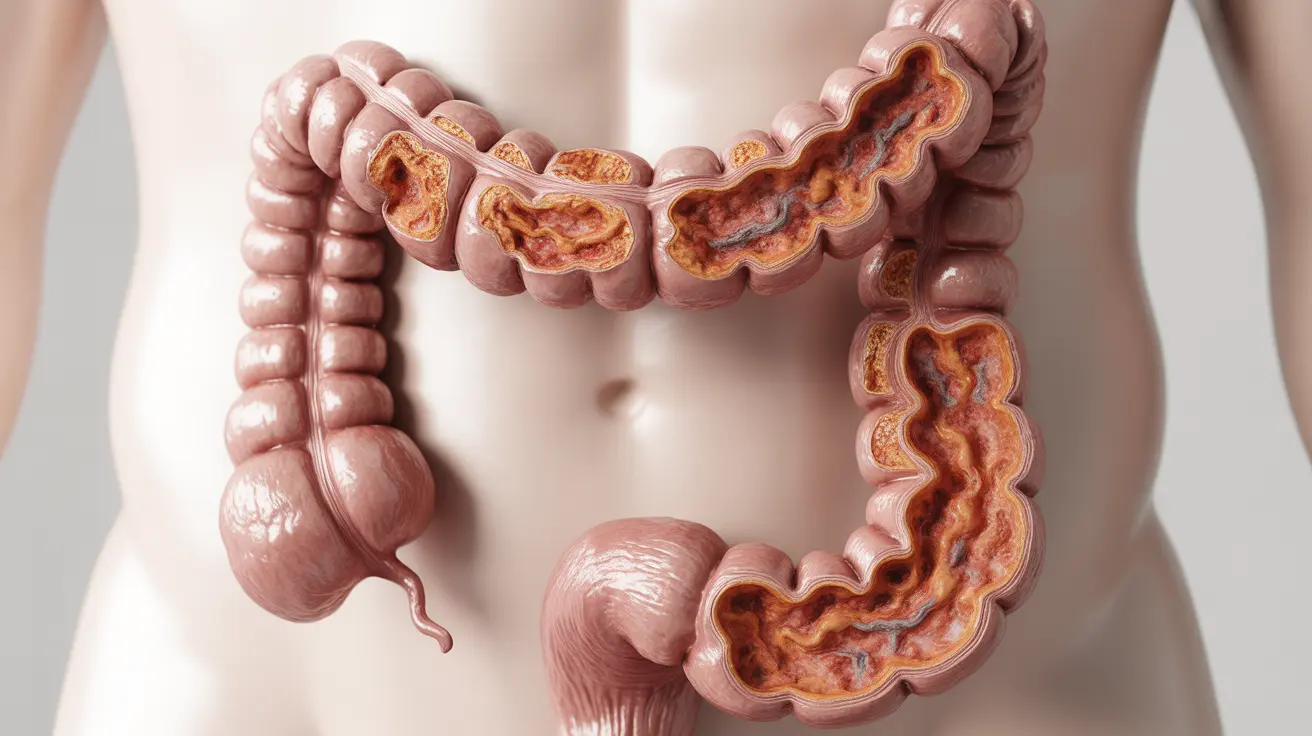Colon dysplasia is a significant medical condition characterized by abnormal cell growth in the colon's lining. This condition requires careful attention, particularly for individuals with inflammatory bowel disease (IBD), as it can potentially develop into colorectal cancer if left unmonitored or untreated.
Understanding colon dysplasia is crucial for early detection and proper management, especially since it often shows no obvious symptoms in its early stages. This comprehensive guide will explore what dysplasia means for your colon health, how it's detected, and what treatment options are available.
What is Colon Dysplasia?
Colon dysplasia occurs when cells in the colon's lining undergo abnormal changes in their size, shape, or organization. These cellular changes represent a precancerous condition that, while not immediately cancerous, signals an increased risk for developing colorectal cancer.
The condition is particularly common in people with long-standing inflammatory bowel disease, including both ulcerative colitis and Crohn's disease. The chronic inflammation associated with these conditions can trigger cellular changes that lead to dysplasia.
Detection and Screening Methods
Regular screening is essential for detecting colon dysplasia, especially for high-risk individuals. The primary screening methods include:
- Colonoscopy with high-definition imaging
- Chromoendoscopy (using special dyes to highlight abnormal tissue)
- Random biopsies of colon tissue
- Advanced imaging techniques like narrow-band imaging
These screening procedures allow doctors to examine the colon's lining in detail and identify areas of concern that require further investigation or monitoring.
Types and Classifications of Dysplasia
Low-Grade Dysplasia
Low-grade dysplasia represents mild to moderate cellular changes. While less severe, it still requires careful monitoring and may need treatment depending on various factors, including the patient's overall health and risk factors.
High-Grade Dysplasia
High-grade dysplasia involves more severe cellular changes and carries a significantly higher risk of developing into cancer. This classification often requires more aggressive treatment approaches and closer monitoring.
Treatment Approaches
Treatment options for colon dysplasia vary based on several factors, including:
- The grade of dysplasia
- The extent of affected tissue
- The patient's overall health
- The presence of underlying conditions like IBD
Common treatment approaches include:
- Endoscopic removal of dysplastic areas
- Surgical intervention for extensive or severe cases
- Regular monitoring for mild cases
- Lifestyle modifications to reduce risk factors
Monitoring and Follow-up Care
Regular follow-up care is crucial for managing colon dysplasia effectively. The frequency of monitoring depends on various factors, including the grade of dysplasia and the presence of other risk factors. Your healthcare provider will develop a personalized monitoring schedule based on your specific situation.
Frequently Asked Questions
1. What is dysplasia in the colon and how is it related to inflammatory bowel disease (IBD)? Dysplasia in the colon refers to abnormal cell growth in the colon's lining. It's particularly common in IBD patients because chronic inflammation can damage DNA and lead to abnormal cell development. People with IBD have a higher risk of developing dysplasia due to ongoing inflammation in their digestive tract.
2. How is colon dysplasia detected and diagnosed during routine screenings? Colon dysplasia is primarily detected through colonoscopy procedures that include tissue sampling (biopsies). Doctors use specialized techniques like chromoendoscopy and high-definition imaging to identify suspicious areas. Multiple biopsies are typically taken for laboratory examination to confirm the presence and grade of dysplasia.
3. What are the differences between low-grade and high-grade dysplasia in the colon? Low-grade dysplasia shows mild to moderate cell abnormalities with some preserved cellular organization, while high-grade dysplasia exhibits more severe cellular changes with significant disruption of normal cell patterns. High-grade dysplasia carries a greater risk of progressing to cancer and typically requires more aggressive treatment.
4. What treatment options are available for managing dysplasia found in the colon? Treatment options range from careful monitoring to surgical intervention. For isolated areas of dysplasia, endoscopic removal may be sufficient. More extensive or severe cases might require surgical removal of the affected area. The choice of treatment depends on the dysplasia's grade, extent, and the patient's overall health status.
5. How often should someone with colon dysplasia undergo follow-up colonoscopies to monitor for cancer risk? The frequency of follow-up colonoscopies varies based on the grade of dysplasia and individual risk factors. Generally, patients with low-grade dysplasia may need colonoscopies every 3-6 months initially, while those with high-grade dysplasia might require more frequent monitoring or immediate intervention. Your healthcare provider will determine the appropriate surveillance schedule based on your specific situation.




